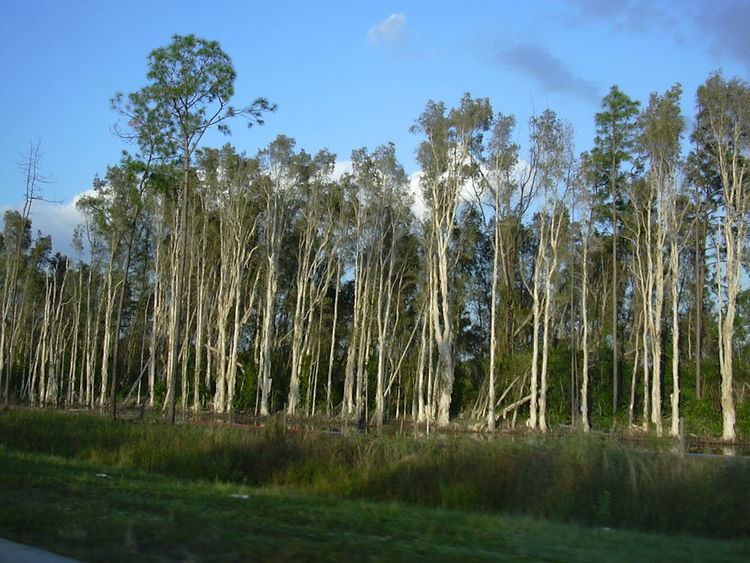 | ||
There are a number of Australian species that have become invasive when introduced into other countries.
Contents
Animals
The Australian magpie was introduced into New Zealand and are considered to be a pest because of attacks on humans and a possible effect on the native bird population.
The common brushtail possum was introduced to New Zealand to start a fur industry, and spread nationwide. With no natural controls they have severe impact on native plant species and thereby endanger native animals species too. Possums have also been observed eating the eggs of nesting birds such as the kereru, tui, and kaka. They are a carrier of tuberculosis which they spread to pasture and hence livestock. Control of them has been an ongoing project of regional councils, the Department of Conservation, Forest and Bird, and various other wildlife preservation organizations.
Melaleucas in the Everglades
Perhaps the best known example of an Australian plant becoming an invasive species is the problematic introduction of Melaleuca quinquenervia into Florida. As with all Melaleuca species, M. quinquenervia seeds prolifically. In the absence of natural predators, it spread throughout southern Florida; at one time it was estimated that it had colonised 12% of southern Florida. The colonised area included a substantial proportion of the Everglades, an important national park and World Heritage Site. Attempts were made to control the spread by burning, but this only exacerbated the problem as it encouraged seed dispersal while failing to kill the trees. The spread of Melaleuca is now managed by a combination of regular herbicide treatment and the introduction of an Australian beetle as a biological control.
Acacia in southern Africa
A number of Acacia species have become serious environmental pests after being introduced into southern Africa. The most troublesome species are Acacia cyclops and Acacia saligna. Both are Western Australian coastal wattles, introduced to help bind drifting sand dunes. They remain serious pests, but some controls have been introduced. In the case of Acacia saligna, the introduction of acacia seed weevils (Melanterius species) has achieved complete control. A lesser degree of control has been achieved for Acacia cyclops by the introduction of a gall rust fungus (Uromycladium species).
